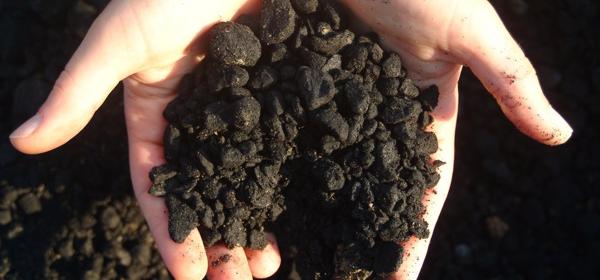To hear some of its proponents talk, the substance known as biochar — a form of charcoal made from logging and agricultural waste — has properties that verge on the magical. It not only cuts down dramatically on the carbon emissions that cause global warming; it also has the potential to create millions of jobs, and helps soil retain nutrients and water to make crops grow bigger and stronger. You almost expect to hear the words “Just $19.99 plus shipping and handling! Operators are standing by!”
The truth, as usual, is a bit less extravagant.
“Biochar not going to solve all of our problems,” said James Amonette, a soil chemist with the Department of Energy’s Pacific Northwest National Laboratory, in Richland, Wash. “But I think it’s a positive thing in terms of soil fertility, especially in the tropics. And it does have the added benefit of sequestering carbon.”
How much carbon is a matter of dispute, but in a 2010 article in Nature Communications, Amonette and several co-authors estimate it could reduce carbon emissions by as much as 10-12 percent. That’s not enough to save the planet, but a healthy start at fighting off climate change.
The way biochar achieves all of these remarkable goals is actually quite straightforward. Farming, tree-clearing and plain old daily living create uncounted tons of waste every year. Burn it and you pump carbon dioxide into the air to warm the planet. Let it rot and the same thing happens, only a bit more slowly. If you heat it in container where there’s no oxygen, however — a process known as pyrolysis — you make charcoal.
The charcoal, or biochar, is far more stable than the original wood or rice straw or cornstalks, especially if you plow it underground; depending on what it’s made from, it can last for hundreds or even thousands of years without rotting. “That,” Amonette said, “accounts for about half of its carbon-reduction power.”
Another 25 per cent, he said, comes from the energy released in the biochar-making process. If you capture and use that energy, you’re cutting down on energy you’d have to get from some other source. And the last 25 percent comes from biochar’s effect on the soil itself. “Some studies show reductions in emissions of methane and nitrogen oxide that come from untreated soil,” said Johannes Lehmann, a soil scientist at Cornell.
“There’s also some indication that soil-borne diseases are reduced, so you need less herbicide, but these have to be firmed up,” Lehmann said.
Finally, biochar’s absorbent qualities help soil retain moisture, which is especially valuable in places where drought is common. In the Amazon basin, a kind of biochar-rich soil known as terra preta — made either deliberately or accidentally by indigenous people — is still more fertile than surrounding land more than a thousand years after it was created, according to Lehman.
All of this being the case, it may seem odd that biochar isn’t a big part of the international conversation about staving off climate change. But despite its great promise, biochar isn’t quite ready for prime time. For one thing, the more waste you turn into biochar, the less you can turn into biofuels, and biofuels have a lot of proponents, too.
For another, biochar works much better as a soil improver where the soil is poor to start with. “If you add it to an acid soil, like those in the tropics,” Amonette said, “you can improve productivity two to threefold. If you add it to Iowa soil, it makes no difference at all.”
Finally, scientists still don’t have a good handle on what the best feedstocks for biochar might be. Organic waste comes in all different varieties, and some might well have less of biochar’s stellar qualities than others.
That suggests a need for a lot more experimentation, but unfortunately, Amonette said, “there isn’t exactly a gold rush of funding.”
It’s a chicken-and-egg problem, he believes. Without the research, it isn’t obvious that biochar can live up to all of its promise (even his own seminal 2010 paper presented a mostly circumstantial case). And without a guaranteed benefit, funding agencies are loath to put too much into research.
“In this country, the U.S. Department of Agriculture is putting some money into it, but that’s about it,” Amonette said.
The greatest promise for understanding biochar comes overseas: Amonette will be spending the second half of September at an international biochar conference in Beijing. “The Chinese,” he said, “are extremely interested.”
This article was originally published on Climate Central – www.climatecentral.org. Reproduced with permission.










